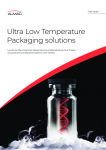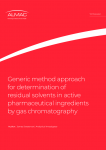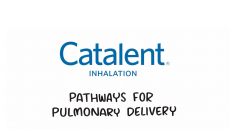Supply chain transparency could restore patient trust in pharma: Zebra

Pharma industry professionals are not alone in their concerns about the pharmaceutical supply chain; It turns out patients are keenly interested in the factors that affect their ability to get their drugs when and where they need them, too. They worry about the cost, availability, safety, quality, and cost of their medications, and they sometimes don’t trust the process, thanks in part to a frequent lack of transparency in the system.
Business technology company Zebra Technologies recently released its Pharmaceutical Supply Chain Vision Study, to take an in-depth look at pharma and patient perceptions of supply-chain concerns, as well as opportunities for improvement and better visibility. For insights, Outsourcing-Pharma connected John Wirthlin, industry principal for manufacturing, transportation, and logistics verticals at Zebra Technologies.
OSP: Could you please tell us a bit about Zebra Technologies—who you are, what you do, key areas of specialty, and what sets you apart from the competition?
JW: Zebra Technologies provides hardware and software solutions that empower front-line workers in retail/e-commerce, manufacturing, transportation and logistics, the public sector, healthcare, and other industries to achieve a performance edge.
I bring my experience in this vertical to collaborate with our customers and industry leaders and understand their strategic objectives. From there, we work to identify relevant solutions to meet those objectives in the near, mid-, and long-term time frames.
I specialize in understanding the needs of the pharma supply chain and the industry disruptors that our customers face, like the Drug Supply Chain Security Act (DSCSA). My colleagues and I help our customers understand how to leverage their current tools and emerging solutions to meet those disruptors.
Zebra is unique in the industry in that we can leverage our technology and global channel partner delivery network to bring end-to-end solutions to many different business problems. We are a true strategic partner that our customers turn to for help meeting the challenges of today’s marketplace.
OSP: Please tell us a bit about your Pharmaceutical Supply Chain Vision Study.
JW: Zebra’s first Pharmaceutical Supply Chain Vision Study captures global market insights about supply chain challenges and technology utilization. More specifically, it reveals patient and pharmaceutical industry decision-makers' perceptions around supply chain stability, regulatory issues, and trust in the entities within the pharmaceutical supply chain. It also identifies areas where supply chain visibility and transparency can be improved.
We surveyed over 3,500 patients and pharmaceutical industry decision-makers globally to evaluate perceived supply chain stability, gauge supply chain responsibility, and trust in its entities. Patients were adults with medical health issues requiring prescription medication or treatment that was filled at a pharmacy. Pharmaceutical industry decision-makers were executive-level leaders in healthcare, manufacturing, pharmacy retail, or transportation and logistics organizations who maintain operations in the pharmaceutical or biopharmaceutical supply chain.
OSP: Did your team have any expectations or guesses as to what you might uncover, before kicking off the study?
JW: Before we released the study, we anticipated that enterprises were grappling with challenges around medication authenticity, availability, and quality assurance. We also believed the pandemic would play a large impact on the responses we received as COVID-19 brought heightened awareness around these challenges and growing consumer expectations and requirements.
OSP: Please share your perspective on what some of the most notable findings are, what they say about the current state of the pharma supply chain, areas that leaders across the pipeline are concerned about, what might lie ahead, and so forth.
JW: The level of patient trust in the entities within the pharmaceutical supply chain is low. An average of 39% of patients place complete trust in pharmaceutical supply chain entities—compared to 44% of pharmaceutical industry decision-makers.
The study revealed patients’ distrust of the medications they are receiving as well as segments within the pharmaceutical supply chain, including the entities who manufacture, distribute, prescribe, and dispense those drugs. The study identified needs for improving supply chain visibility and transparency as 43% percent of patients fear more illness and/or death could result from contaminated or tainted medications without supply chain improvements.
The results highlight how track and trace technology is key to delivering more transparent information about pharmaceuticals that patients want and need to instill trust in the pharmaceutical industry.
Pharmaceutical industry decision-makers indicate that the integration of enhanced track and trace solutions is key to strengthening supply chains and meeting patient expectations around medication authenticity, availability, and quality assurance.
The study also found that enterprises are continuing to leverage technology to improve supply chain operations and 96% of surveyed enterprises agree that supply chain visibility provides a clear competitive advantage. Furthermore, 92% of pharmaceutical industry decision-makers are planning to increase investments in pharmaceutical manufacturing and supply chain monitoring.
OSP: Were there any surprising or otherwise notable figures?
JW: With patients being more aware of global supply chain vulnerabilities as a result of the pandemic, a high percentage of patients (81%) reported heightened interest in how their medications are manufactured, stored, handled, and transported. The voice of the end consumer spoke volumes about the importance of keeping the supply chain safe. This is echoed within the pharma supply chain community with its coordinated efforts to ensure medications are effectively tracked from the manufacturer to the point of care.
OSP: Among the areas you touch upon is patient satisfaction—could you tell us a bit about how patients react to SC issues?
JW: With health at stake, many patients do not tolerate issues with their prescriptions and have no trouble switching pharmacies, providers, or brand names when unsatisfied with an experience. For enterprises in the pharmaceutical supply chain space, avoiding supply chain issues before they occur is critical to keeping your customers and building your brand name. Today’s patients are empowered and know what they want. Providing an excellent experience for them is what will set brands apart in this industry.
With the onset of easy-to-use consumer websites, it is easy to change pharmacy providers and shop for medications across multiple sources. Pharma manufacturers, distributors, and pharmacies must be vigilant to ensure consumers feel safe. Consumers can quickly shift brand loyalties in lieu of negative experiences they learn about through the media or friends and family.
OSP: Could you also talk about the transition from reactive to predictive operations, and how that shift yields benefits?
JW: Enterprises understand technology utilization helps maintain a healthy and strong supply chain. Executives agree technology improves business operations, especially supply chain optimization, and risk reductions with proper handling, transportation, and storage. The benefits of modernizing operations are apparent as respondents believe that specific technologies such as temperature-sensitive labels and batch item monitors as well as location technology can improve traceability.
Executives place investments in devices and technology to track medications from plant to patient as the top industry priority. And investments are expected to rise for pharmaceutical supply chain monitoring tools. With investments on the rise as well as an expected future shift to operate more responsively and predictively, it’s evident enterprises are looking for more resilient operations.



















